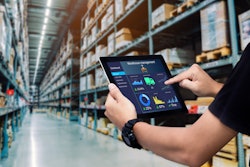
The food retail industry’s embrace of artificial intelligence (AI) and big data is transforming the customer experience. Grocery shopping is being reinvented, from online ordering and doorstep delivery to personalized in-store promotions and “smart shelves” that identify misplaced items. Congruently, intelligent software is transforming how grocers do business.
Retailers have been historically impaired by siloed data, manual pricing processes, a lack of real-time reporting and insufficient demand forecasting. Retail technology (retailtech) software solutions, powered by AI, are giving food retailers insight into the underlying variables that influence any KPI. Consequently, when a key metric changes, it’s immediately clear which inputs are driving the change, giving retailers control of their business drivers.
Understanding GMROI
Measuring gross margin return on inventory (GMROI) neatly frames the AI-driven changes taking place.
GMROI provides useful insight into merchandise choices and profitability, but many other critical metrics are wrapped into this KPI. It’s extremely challenging to effectively measure each of the inputs. To understand the complexity, let’s look at how GMROI is calculated:
GMROI = [(Quantity Sold x Price) – Cost of Goods Sold – Shrinkage] / Average Inventory
This formula is straightforward enough, but a quick look under the hood reveals the near-countless factors that affect GMROI. To capture the above variables accurately, a retailer would also need to measure the following:
- Quantity sold: Marketing, logistics, and inventory management
- Price: Pricing strategies and competitive pressure
- Cost of goods sold: Vendor-bargaining power and inflation
- Shrinkage: Warehouse and store operations
- Average inventory: Product turnover and supply-chain efficiency
Disparate variables, disparate data sources
Boiling these factors down into a single figure is invaluable, but without insight into all the inputs of GMROI, food retail executives can’t effectively guide their operation and product portfolio strategies. Unfortunately, effectively measuring these inputs across thousands of SKUs has historically been a nightmare, if not operationally impossible.
Legacy software systems are complex and require extensive training before users become proficient. Standalone point-of-sale, inventory management, supply chain and price-optimization systems are siloed and specialized across the retail value chain. In the past, food retailers haven’t had the luxury of a single-platform solution that maps all dynamics and interactions between GMROI variables, from point-of-production to point-of-sale.
The future of food retail: artificial intelligence and big data
Retailtech is rapidly evolving to address the industry’s ever-growing demands. By prioritizing the customer experience, the retailtech sector is building unique and personalized approaches to efficiently attract and retain customers. A new breed of AI-driven solutions is breaking down data siloes, improving user experiences and leveraging operational and competitive factors to inform decision-making. Retailers and food supply chain executives are gaining unprecedent visibility into their operations, and in-turn, driving effective optimization.
Significant growth is expected in the retailtech space, with the sector expecting to reach $127.28 billion by 2029, suggesting a high compound annual growth rate (CAGR) of 27.4%. The largest future growth in the following retailtech software spaces:
In-store analytics. AI-based solutions offer integrated point-of-sale, loyalty program, background music and in-store traffic analytics. The software looks to provide holistic in-store experiences that drive returning customers, while balancing loss prevention analytics and reporting that reduce shrinkage and improve margins.
Price optimization. Many retailers are using antiquated price optimization technology at a time when consumer expectations and behaviors have changed dramatically in recent years. In times of high inflation with soaring costs, distributors and retailers are forced to make real-time decisions on how much cost to pass onto consumers without jeopardizing demand (i.e., price elasticity of demand). New tools are harnessing machine learning and big data to help retailers improve pricing strategy, optimize quantity sold and protect gross margins based on competitive intelligence.
Product sourcing. New integrated platforms that support real-time product sourcing decisions based on dynamic market and supply chain information are helping retailers reduce costs without compromising supply quality and sourcing stability. Access to immediate, current information supports new product development decisions and accelerates time-to-market in highly competitive product-discovery environments.
Demand forecasting and assortment optimization. AI-driven tools are automating and advising promotional assortment, updating pricing, preventing overstocking and managing inventory forecasting to maximize retailers’ revenue. AI software is transcending just predicting future demand and sales; it’s ensuring that the right inventory is available at the right time and priced appropriately to fulfil demands. It also gives retailers tools to assist with influxes in staffing needs that impact warehouse and store operations.
An intelligent future
The main growth drivers in retailtech are scalable, cloud-based Software-as-a-Service (SaaS) software systems that integrate AI and big data to track GMROI variables and improve the customer experience. Machine learning systems can dissect vast quantities of data and generate managerial insights with an efficiency that human teams simply cannot match. It’s time that retail executives embrace the future of intelligent software to foster success and grow their enterprises.



















